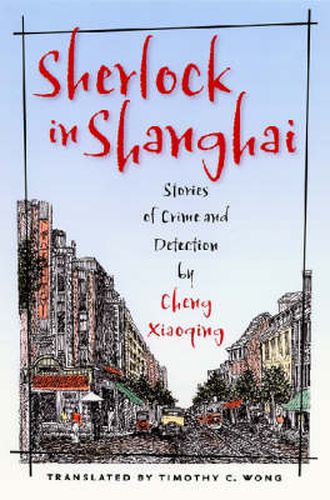Readings Newsletter
Become a Readings Member to make your shopping experience even easier.
Sign in or sign up for free!
You’re not far away from qualifying for FREE standard shipping within Australia
You’ve qualified for FREE standard shipping within Australia
The cart is loading…






Shanghai in the 1920s and 1930s -
the Paris of the Orient
- was both a glittering metropolis and a shadowy world of crime and social injustice. It was also home to Huo Sang and Bao Lang, fictional Chinese counterparts to Arthur Conan Doyle’s Sherlock Holmes and Dr. Watson. The duo lived in a spacious apartment on Aiwen Road, where Huo Sang played the violin (badly) and smoked Golden Dragon cigarettes as he mulled over his cases. Cheng Xiaoqing (1893-1976),
The Grand Master
of twentieth-century Chinese detective fiction, had first encountered Conan Doyle’s highly popular stories as an adolescent. In the ensuing years he played a major role in rendering them first into classical and later into vernacular Chinese. In the late 1910s, Cheng began writing detective fiction very much in Conan Doyle’s style, with Bao as the Watson-like-I narrator - a still rare instance of so direct an appropriation from foreign fiction. Cheng Xiaoqing wrote detective stories to introduce the advantages of critical thinking to his readers, to encourage them to be skeptical and think deeply, because truth often lies beneath surface appearances. His attraction to the detective fiction genre can be traced to its reconciliation of the traditional and the modern. In
The Shoe,
Huo Sang solves the case with careful reasoning, while
The Other Photograph
and
On the Huangpu
blend this reasoning with a sensationalism reminiscent of traditional Chinese fiction.
The Odd Tenant
and
The Examination Paper
also demonstrate the folly of first impressions.
At the Ball
and
Cat’s-Eye
feature the South-China Swallow, a master thief who, like other outlaws in traditional tales, steals only from the rich and powerful.
A Summer Night’s Tragedy
clearly shows Cheng’s strategy of captivating his Chinese readers with recognizably native elements even as he espouses more globalized views of truth and justice.
$9.00 standard shipping within Australia
FREE standard shipping within Australia for orders over $100.00
Express & International shipping calculated at checkout
Shanghai in the 1920s and 1930s -
the Paris of the Orient
- was both a glittering metropolis and a shadowy world of crime and social injustice. It was also home to Huo Sang and Bao Lang, fictional Chinese counterparts to Arthur Conan Doyle’s Sherlock Holmes and Dr. Watson. The duo lived in a spacious apartment on Aiwen Road, where Huo Sang played the violin (badly) and smoked Golden Dragon cigarettes as he mulled over his cases. Cheng Xiaoqing (1893-1976),
The Grand Master
of twentieth-century Chinese detective fiction, had first encountered Conan Doyle’s highly popular stories as an adolescent. In the ensuing years he played a major role in rendering them first into classical and later into vernacular Chinese. In the late 1910s, Cheng began writing detective fiction very much in Conan Doyle’s style, with Bao as the Watson-like-I narrator - a still rare instance of so direct an appropriation from foreign fiction. Cheng Xiaoqing wrote detective stories to introduce the advantages of critical thinking to his readers, to encourage them to be skeptical and think deeply, because truth often lies beneath surface appearances. His attraction to the detective fiction genre can be traced to its reconciliation of the traditional and the modern. In
The Shoe,
Huo Sang solves the case with careful reasoning, while
The Other Photograph
and
On the Huangpu
blend this reasoning with a sensationalism reminiscent of traditional Chinese fiction.
The Odd Tenant
and
The Examination Paper
also demonstrate the folly of first impressions.
At the Ball
and
Cat’s-Eye
feature the South-China Swallow, a master thief who, like other outlaws in traditional tales, steals only from the rich and powerful.
A Summer Night’s Tragedy
clearly shows Cheng’s strategy of captivating his Chinese readers with recognizably native elements even as he espouses more globalized views of truth and justice.